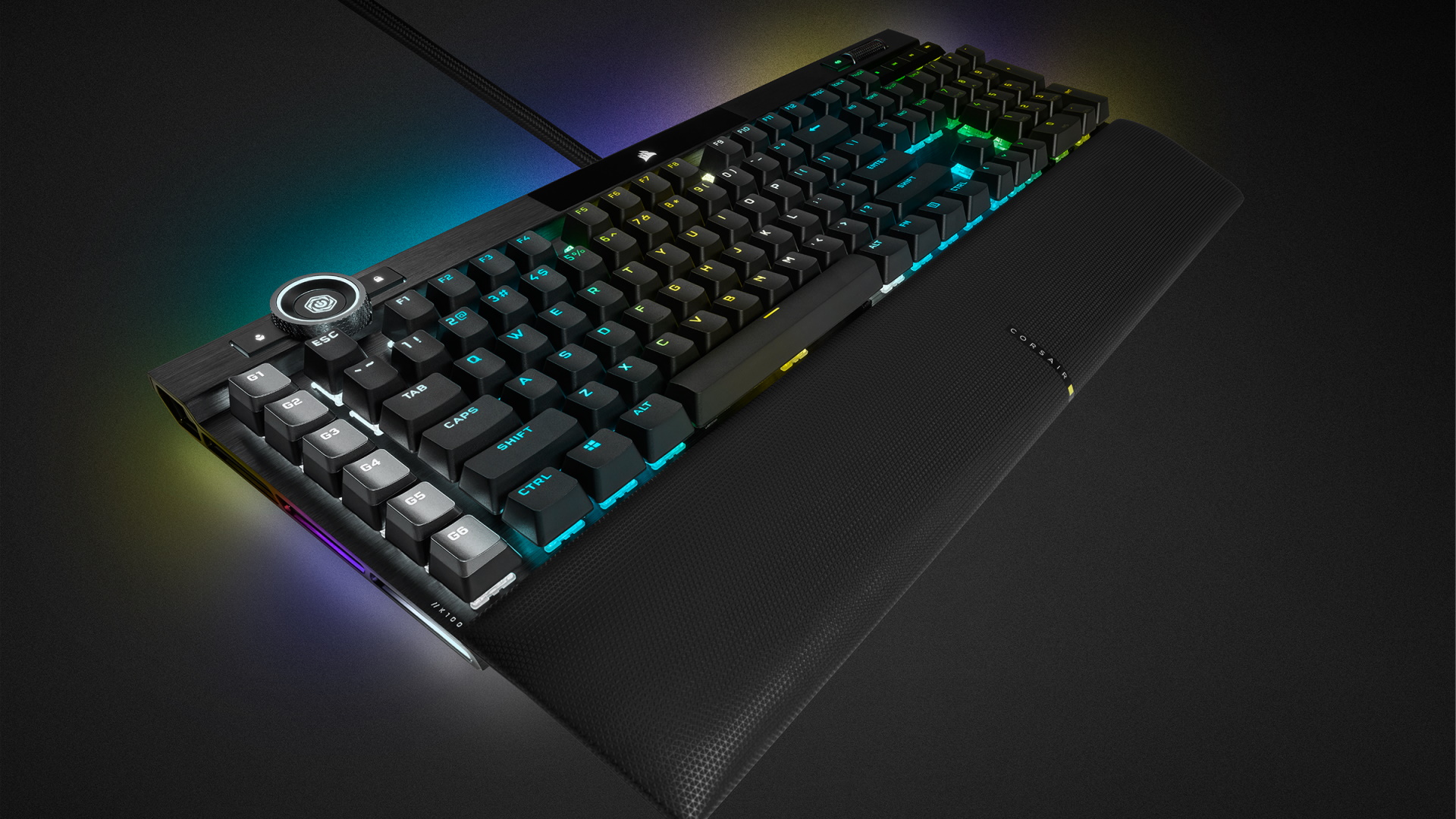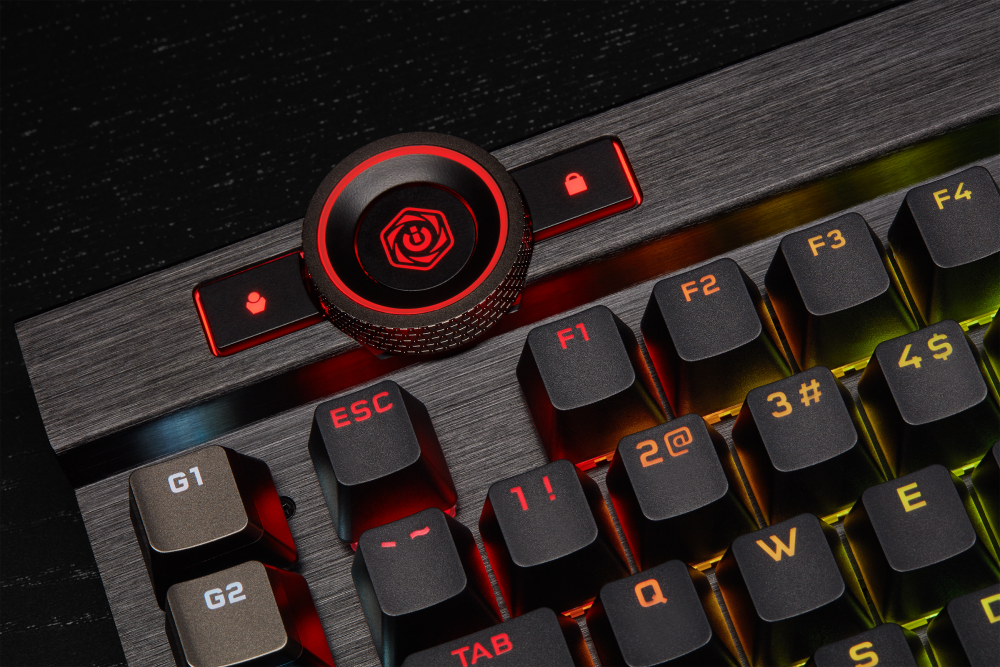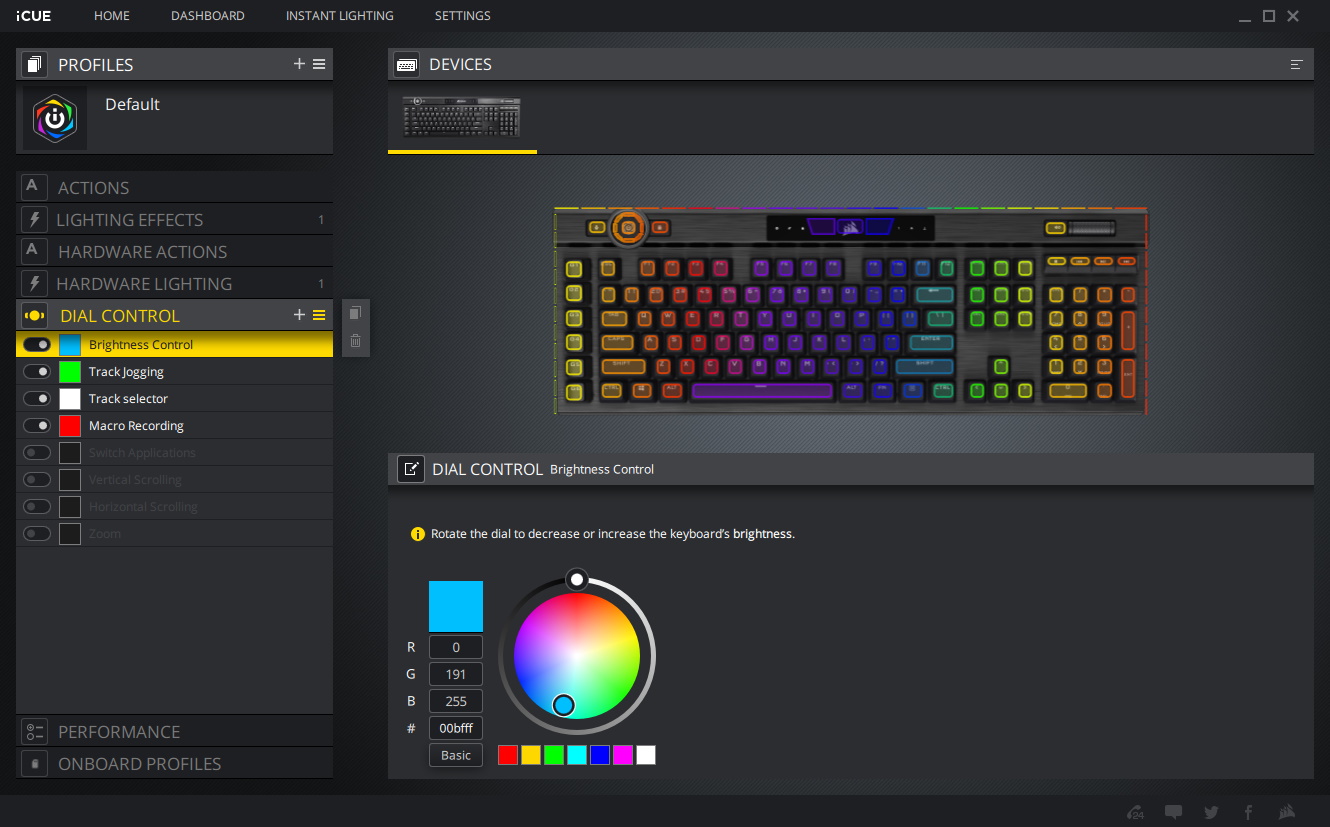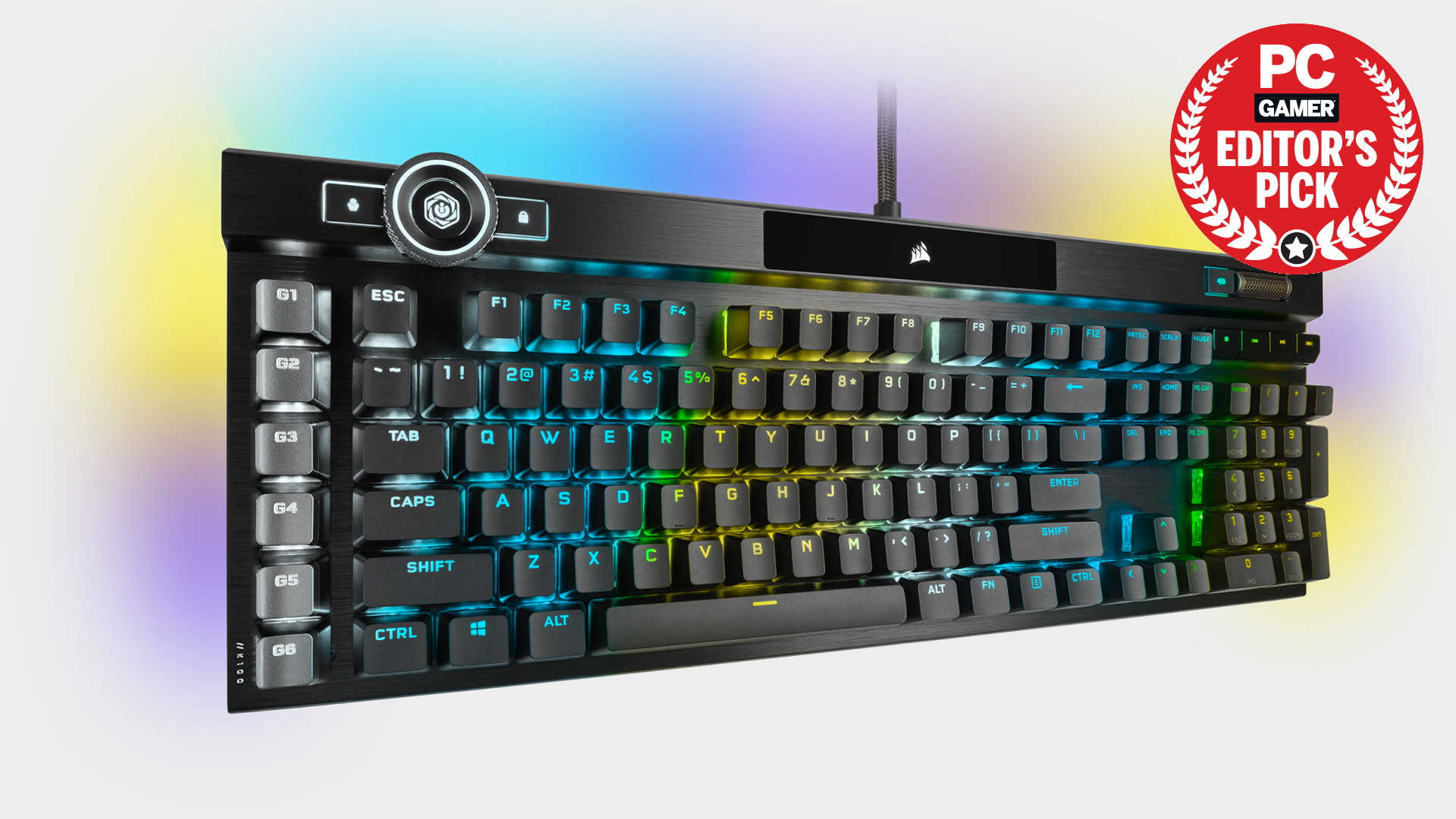Our Verdict
Sure it costs a small fortune, but the K100 makes you want to justify its cost. Possibly the last keyboard you'll ever need to buy.
For
- Responsive optical switches
- All the RGB, all the time
- Premium build quality
Against
- Incredibly expensive
- Need both Elgato and iCue software
PC Gamer's got your back
Let me start by saying that while I was impressed by Corsair's previous offering, the K95 RGB Platinum, I struggled with the price. Really struggled. $200 is a lot for any keyboard, regardless how good it is. The thing is, it really was a good keyboard, taking the top spot in our best gaming keyboard guide for the last few years. That's a brief bit of context for the K100, which costs even more than its predecessor. At $230 it is 15 percent pricier, but will you get the 15 percent more out of it? Possibly. Possibly even more.
Switch: Corsair OPX
Keycaps: PBT double-shot
Lighting: 44 zones, per-key lighting
Onboard Storage: 8MB, up to 200 profiles
Extra Ports: USB 2.0 passthrough
Connection Type: USB Type-A
Cable: 1.8m braided cable
Weight: 2.9 lbs (1.3kg)
Price: $229.99
The fundamental core of the K100 is very much like the K95, with the same premium quality throughout, the same overall design, the same macro keys down the left hand side, the same metal roll in the top right corner, the same media keys just below it, and the same double-shot keycaps. USB passthrough is easy to access and you get a comfortable wrist rest that snaps on magnetically just like before.
But look a bit closer and there are differences. The switches in this particular model are completely new, and are in fact Corsair's first optical offering. Then there's the big glowing iCue control wheel in the top left hand corner, which takes on a number of guises depending on what mode it's in: You can use it to skip music tracks, adjust light levels, use it as a zoom or scroll wheel, plus a few more.
The K100 also has more of that lovely RGB lighting that Corsair knows we love so much. In total there are now 44 zones for you to throw light out of (it spills out of the sides as well as out of the back too). And having rippling, wavy patterns play off your keyboard can be every bit as distracting as you can imagine.
I'm not always a fan of RGB, and this is definitely what would be considered to be excessive, but even so, I don't hate it. I quite like it, although the simple rainbow wave is prefered pattern for the last week I've been using this as my main keyboard, peppered with just selecting a single colour so as not to get too distracted—I'll admit there were times when I could be found just sat staring at the pretty waves of colour playing off something that is primarily an input device.

As for the switches themselves, they are Corsair's new OPX optical-Mechanical switches. It's worth noting from the outset that the OPX switches are still digital units, not the variable analogue type that can be found in the likes of the Wooting keyboards, which can detect how far down the key is pressed and respond by turning harder (for example).
These switches feel great for typing, with a 1mm actuation point and 45g actuation force, bottoming out at 3.2mm. If those figures don't mean much to you, they're very sensitive. I found myself watching my fingers in games as I turned left and right without realising I'd actually started pushing down on the keys. This is a sensitive keyboard, and needs to be treated as such. After a week of use though, it feels incredible to work and play with.
At the backend you have Corsair Axon Hyper-Processing Technology doing the grunt work of actually keeping the keyboard up and running. This new engine supports a native polling rate of 4,000Hz, although the benefit of this isn't obvious, and by default it is set at the more standard 1,000Hz anyway.

The iCue control wheel is a bit of a divisive inclusion, with some members of the team disliking it's design (I think Jacob was actually sick when he saw it). I don't mind it, although the iCue logo in its center seems a little unnecessary. It does have a nice tactile feel to it, and using it to dim the keyboard's RGB lights works particularly well. Press the central button and it'll skip between modes, with the ring's colour indicating the current mode.
To the left of this wheel you'll find the user profile button (you have 8MB of onboard storage by the way), while to the right is the games lock, that is designed to ignore the Windows key and a few other combinations that can pull you out of your gaming nirvana. These are both very short travel buttons, like the mute button to the left of the volume roller and the media controls below it, which can feel a little weird compared to the main keys.

You don't have to install Corsair's iCue software to gain access to a lot of the effects, with keyboard shortcuts (Fn plus the number keys selecting colour patterns) and the iCue control wheel affording control over the intensity. Of course once you do install iCue you have a lot more control over how the individually-lit keys light up, and you can set the iCue control wheel to perform more tasks as well, with the potential to control certain game aspects with it as well (if you can be bothered).
The six dedicated macro keys down the left hand side of the keyboard work best with Elgato Stream Deck software, which means to get the most out of this you're going to need to install two different pieces of software. Not the end of the world, but it's a shame that Corsair hasn't integrated everything it needs into iCue already.
This is a minor point against the K100 though, and overall, there's a lot to like about the Corsair K100 RGB, with the only real exception being the price. At this point it almost feels as if Corsair wants to see just how high people are willing to go. Frustratingly it just so happens to have produced a keyboard that feels awesome, boasts loads of features, and has enough RGB lit distractions to keep your eyes off your long-suffering bank balance. So we may not be at our limit quite yet.
Sure it costs a small fortune, but the K100 makes you want to justify its cost. Possibly the last keyboard you'll ever need to buy.
Alan has been writing about PC tech since before 3D graphics cards existed, and still vividly recalls having to fight with MS-DOS just to get games to load. He fondly remembers the killer combo of a Matrox Millenium and 3dfx Voodoo, and seeing Lara Croft in 3D for the first time. He's very glad hardware has advanced as much as it has though, and is particularly happy when putting the latest M.2 NVMe SSDs, AMD processors, and laptops through their paces. He has a long-lasting Magic: The Gathering obsession but limits this to MTG Arena these days.



